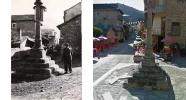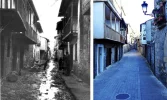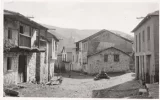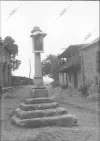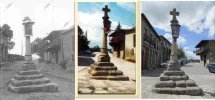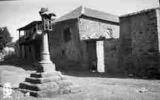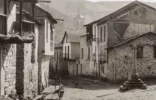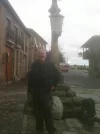caminka
Veteran Member
- Time of past OR future Camino
- see signature
years back, I came across an article about an excavation beneath this (more) modern cross at the end of calle real in molinaseca. the article said that beneath the cross a monolith (possibly a menhir) was buried. this would probably be a unique definite reference of a cross replacing an earlier road/route marker, and on top of that, on the camino francés no less. I would love to see that article again, or some other reference to this excavation. if I remember correctly, the article was a skan/jpg? and part of a blog? it probably came from a local newspaper or magazine. the picture(s) were in colour. this time I have had no luck finding it or any other info. anyone came across something similar? @Kathar1na perhaps, who has an incredible nose for finding obscure stuff on the net? @VNwalking, who I know has interest in such prehistoric stuff?




